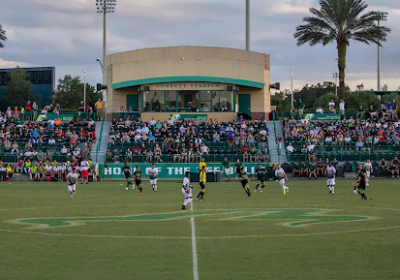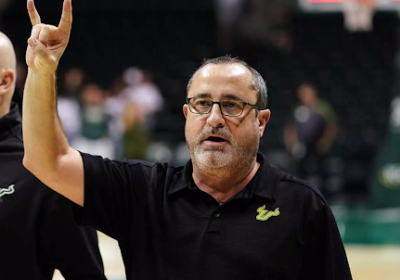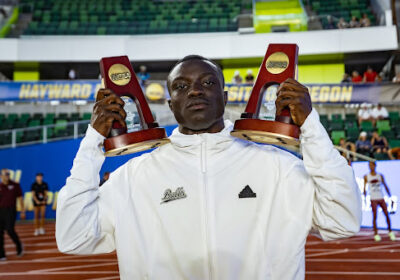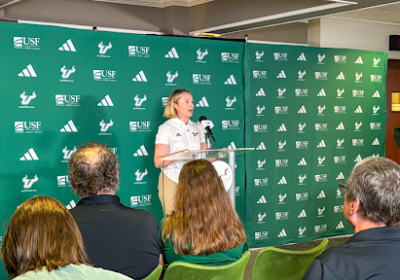Analysis: What’s potentially in store if college sports return this fall
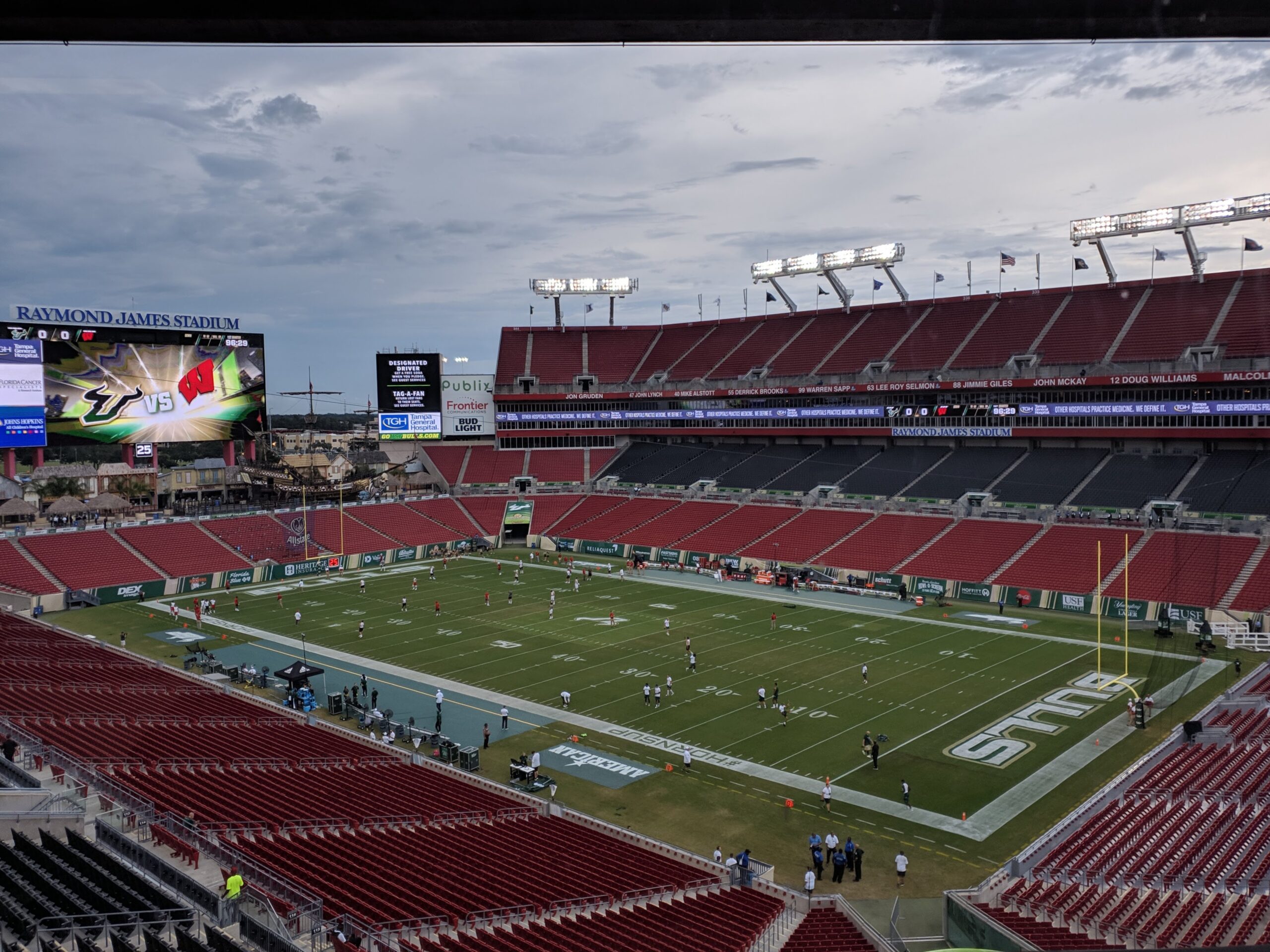
The proposed start date for the USF football season is now two months away, and things aren’t exactly looking up. As coronavirus cases in the U.S. top 3 million, and states like Florida continue to hit record-high daily cases, there may be a point where the plug is pulled on sports, not just in the Sunshine State but across the country.
On Wednesday, the Ivy League canceled its fall sports and is unsure what its plans are for the spring. It’s the first league to cancel fall sports, and it likely won’t be the last.
If college sports somehow do happen in the fall, it’s difficult to pinpoint exactly how they would play out, but by looking at trends of pro leagues in the U.S., one could get a general idea.
No fans in the stands
Perhaps the most noticeable aspect of the college game that could be different is the lack of fans in the stands. Almost every major league in the United States has decided to play behind closed doors — NWSL, MLS, NBA, WNBA, NHL and MLB games won’t have fans in attendance.
If you’ve been watching the NWSL Challenge Cup or any of the major European soccer leagues, then a lack of fans in the stadium has been the norm for at least the past two months.
College football could follow suit, but the decision to allow fans would likely be made by individual conferences or schools instead of the NCAA.
Not having fans would certainly hurt school revenues — UCF athletic director Danny White in May told ESPN’s Scott Anez that a lack of fans in the stands could be a “$30 million problem” for the Knights.
#UCF AD Danny White tells @AnezSez on @ESPNOrlando that he would rather see the college football season postponed instead of playing without fans in the stands. Described playing without fans as a "$30 million problem" for the University.
— Nick Gryniewicz (@GetNickG) May 20, 2020
But there are alternatives to a lack of fans while still bringing in some form of money — having fans pay for virtual tickets that give them access to exclusive content and rewards.
Fans may not be able to cheer on their team in person, but if schools offer incentives and exclusives, they’ll be willing to pay top dollar.
Added crowd noise has been a debatable topic since it was made a reality when the Bundesliga returned in May. The quality was hit or miss, but it offered something for those watching at home.
By adding more features to broadcasts, the experience improves to an extent. Nothing beats the atmosphere of tens of thousands of fans, but things like mic’d up players and mid-game interviews could provide a rewarding experience for those watching at home.
New Formats
The NWSL, WNBA, NBA and MLS have all entered an isolated atmosphere in a host city to play out tournaments, playoffs or a full season in the case of the WNBA. These “bubbles” have been created to ensure athletes, coaches and staff stay protected while in season and limit exposure to fans.
But totally isolating college teams is nearly impossible, considering the vast number of programs, nature of student-athletes and physical and financial limits of individual campuses. Simply put, there’s just too much to regulate and monitor.
There might be limitations to total isolation, but limiting schedules to just conference opponents could mean another form of isolation.
If schools were limited to playing conference opponents, that could see USF football’s four nonconference games against Texas, Bethune-Cookman, Nevada and Florida Atlantic get scrapped or rescheduled.
“I think the nonconference games are in serious jeopardy,” ESPN’s Paul Finebaum told The Charlotte Observer.
Another option that’s being considered is spring football, which has been the route the Ivy League is likely taking. If other conferences follow suit, the decision to play football in the spring would likely hinge on if schools open to their full capacity. That could mean interference with basketball, baseball and softball seasons.
If football moves its season to the spring, then where does that leave soccer and volleyball? Moving the entire fall schedule to the spring is nearly impossible, so that means if football makes the jump, the rest of the fall sports likely get canceled.
Increased injuries
The NWSL is the only major American league to have returned, and while there haven’t been any injuries out of the ordinary, the risk is high.
After all, any physical activity without proper preparation and adequate training could lead to an increase in injuries, according to News Medical Life Sciences.
With college athletes still limited to voluntary weight-training workouts or whatever they can do from home, there’s a significant chance teams won’t have fully game-ready rosters at the start of the season.
That means there’s a chance of seeing players swapped in and out of games at a higher rate. There’s a chance that third- fourth- and fifth-string players could see regular action, whether it’s to protect star players or fill in for injured options.
Seasons cut short
Once seasons get off to a start, there’s no telling how long they’ll be able to run. If players continue to test positive and cases continue to grow, seasons could be at risk of being cut short.
NBA commissioner Adam Silver admitted the league is on course to start on time, but there’s no telling what coronavirus could do to the remainder of the season.
“We are testing daily. We haven’t put a precise number on it, but if we were to see a large number of cases and see spread in our community, that would of course be a cause to stop as well,” Silver told TIME.
The MLS is Back Tournament kicks off Wednesday, but it will be without FC Dallas, which pulled out due to multiple players testing positive for coronavirus.
Now, Nashville SC could become the second team to pull out of the tournament after five of its players tested positive. Nashville’s opening match against Chicago has since been postponed, but the team could end up exiting the tournament entirely.
The situation MLS is facing isn’t something that could be confined to American soccer. It could affect all leagues returning to play.
Given the lack of bubble atmospheres and sheer number of college programs, there’s a very strong chance some schools won’t get to complete — or even start — their seasons.



